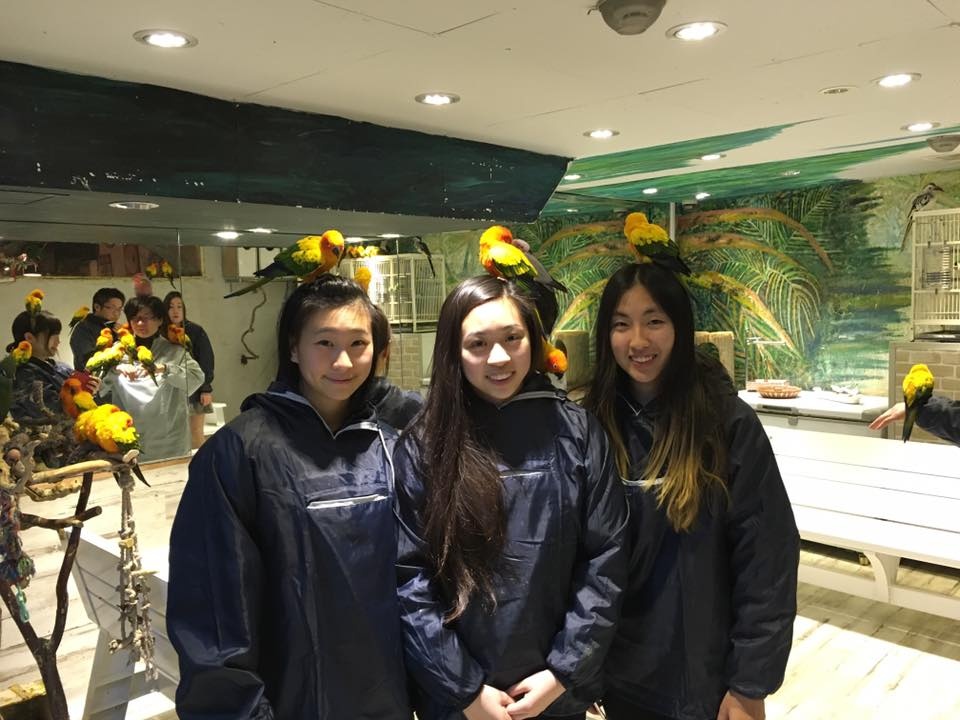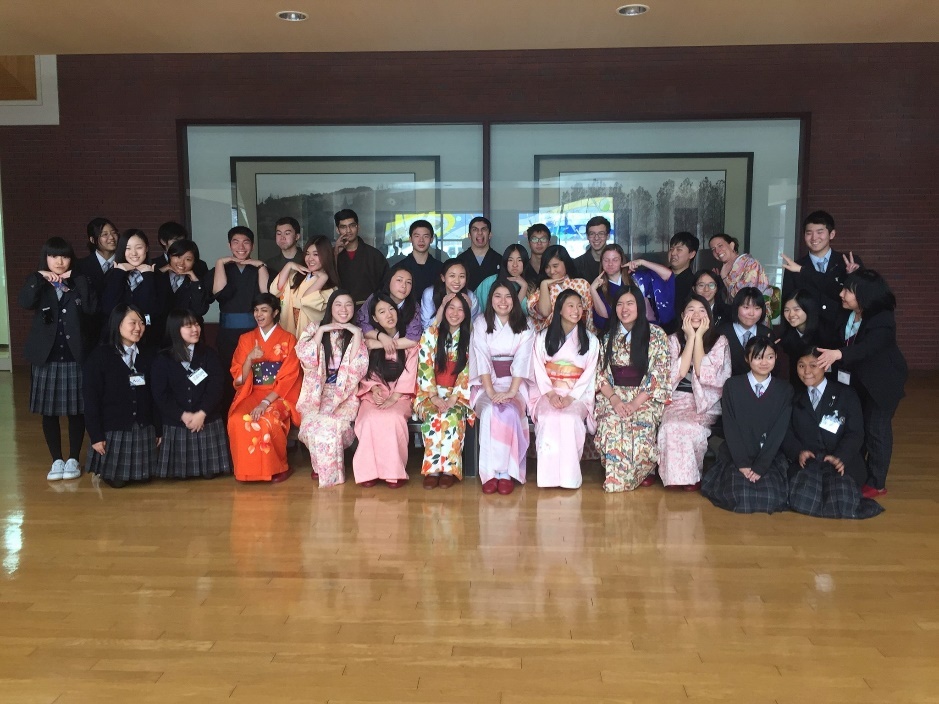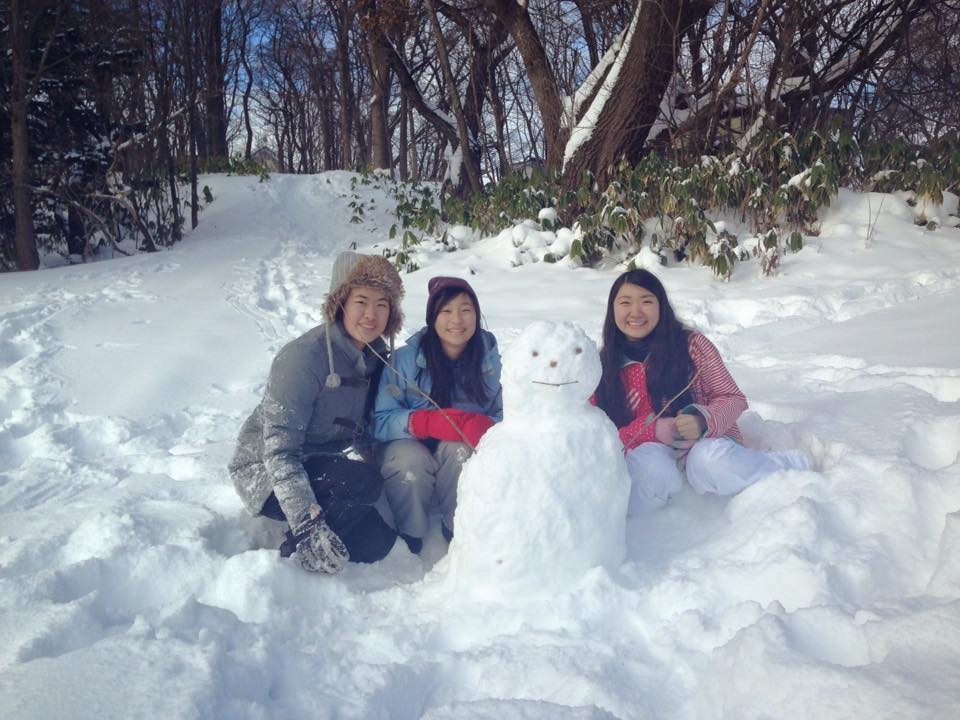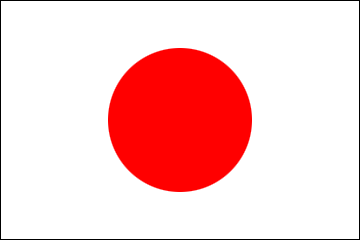My Experience on the Kakehashi Project
2016/10/29
 Visiting the Bird Cafe
Visiting the Bird Cafe
By Chi Lao
Chi Lao is a student at Monta Vista High School studying Japanese. She visited Hokkaido, Japan in January 2016 as a participant of the Kakehashi Project, a Japanese Government educational exchange program
It was the beginning of second semester in my junior year, one of the busiest years, but I decided to take the opportunity to experience life in Japan for a week. I had been to Japan multiple times before with my family, but it was not the same. The Kakehashi Program allowed me to travel with my friends to another continent and I was very excited about it. I met many new friends through this trip and got to observe Japanese lifestyle more closely.
At Tokyo, the majority of the mornings were spent traveling with the whole group and learning more about the historical sites. We passed by many historical buildings while we were on the bus and our guide, Ms. Seguchi, would explain the significance. Unlike America, almost all the structures in Japan have a story behind it and most buildings were thousands of years old. During the night, small groups ventured into the brightly lit streets of Shibuya. Most stores were closing by the time we arrived to Shibuya but we went across the famous Shibuya Crosswalk. The road was so long it felt as if we had to run across in order to make it to the other side in time. One of our destinations was Asakusa. Everyone explored the temple and got a Omikuji, a fortune slip. My friends and I went to a Bird Cafe; it was not exactly a cafe because we could not eat but we were still able to have close interactions with the birds.
 Kakehashi participants trying on Kimono
Kakehashi participants trying on Kimono
Though it was only for 3 days, I feel that I learned the most and gained some of the most priceless memories during my time in Hokkaido. Learning another culture is really not about all of the history and politics but really about the people and their way of interactions. We visited Ritsumeikan Keisho, a school which has both junior high and high school. We got the chance to wear kimono, fold origami paper, and participate in a tea ceremony. Wearing a kimono is just as difficult as putting them on; the kimono squeezes the waist which forces us to keep our back straight and maintain a good posture at all times. Even though it was one of the coldest days in Hokkaido, the volunteers were sweating when helping all the students put on a kimono. During the tea ceremony, we had to sit on our knees, not only because we were wearing kimono but also because of the culture. Our legs were too numb to sit through 30 minutes without shifting our positions. The tea ceremony is a sophisticated routine that people practice to purify their heart and mind. The quiet atmosphere and the simplicity taught me to appreciate the beauty of nature. At the end of all the activities, it was time to part with the teachers and students who accompanied us during the events in Ritsumeikan Keisho, we exchanged contact information and parted.
 Playing in the snow
Playing in the snow
One and half days of the Hokkaido trip was spent with a host family; I spent this short period of time with the Nagano family. Unlike America, if the family wanted to play in the snow, they simply step outside during winter and there would be a huge pile of snow. America’s snow is very hard but the snow in Japan was soft like a cotton candy and thick like the mattress; so thick that they have to clear away the snow in front of their houses. Honoka, one of the sisters in the family, suggested we jump into the snow from a playground structure. It seemed scary looking down but the snow cushioned our fall.
The whole time was not spent on playing in the snow, Honoka, her mother, and her sister, Konoha, brought us to Otaru, a city with lots of historical buildings. We ate ramen, dango, taiyaki and ice cream. We also got the chance to play with glass and make a small keychain; it was really tiring because we had to keep our arm the same position when holding the glass. Near the end of the day, we went to the department store and bought lots of sashimi for that night’s dinner. We also took a few purikura to record down our memories. The day came when we had to travel back to Tokyo and all host families and students met for a mini farewell party. I cried lots when I sent the Nagano family off to the elevator, it was a short period of time, but I have bonded with them so much. I still keep in contact with Honoka, but I really wish I could go back to Japan soon and visit them.
The whole time was not spent on playing in the snow, Honoka, her mother, and her sister, Konoha, brought us to Otaru, a city with lots of historical buildings. We ate ramen, dango, taiyaki and ice cream. We also got the chance to play with glass and make a small keychain; it was really tiring because we had to keep our arm the same position when holding the glass. Near the end of the day, we went to the department store and bought lots of sashimi for that night’s dinner. We also took a few purikura to record down our memories. The day came when we had to travel back to Tokyo and all host families and students met for a mini farewell party. I cried lots when I sent the Nagano family off to the elevator, it was a short period of time, but I have bonded with them so much. I still keep in contact with Honoka, but I really wish I could go back to Japan soon and visit them.
